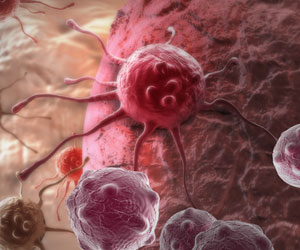Radiotherapy and chemotherapy benefit patients who have high-risk non-melanoma skin carcinomas of the head and neck, reveals study.

Non-melanoma skin carcinoma (NMSC) is the most common malignancy worldwide with an incidence of over 1.3 million in the United States. These cancers occur in anatomic areas subject to frequent sun exposure such as the head and neck. Most of these cancers can be cured with local treatments such as surgery or radiation. Some cancers, however, are high risk, meaning they are biologically and clinically aggressive, and require more treatment, with characteristics such as large tumor size, regional nodal involvement or recurrent disease.
Because this patient population is small, there are limited data on optimal care for these cancers. Neil Hayes, MD, MPH, associate professor of medicine and senior author, explains, " Combination therapy is often used to treat other types of cancer, but not non-melanoma skin carcinoma. Our study provides the first evidence that this approach might be effective for this high-risk type of cancer. Skin cancer incidence is increasing worldwide, so having a more comprehensive and effective treatment regimen will help the patients with the most aggressive forms of this disease."
Scientists with the UNC Head and Neck Oncology Program conducted a retrospective study of 45 patients treated for NMSC with either concomitant radio- and chemotherapy or radiotherapy alone. They found that those treated with the combination therapy relapsed at rates that approximately half of those of patients who received radiation when accounting for other risk factors. While the relatively small size of the study does not definitively prove such a large benefit, it does offer strong support that this treatment approach should receive attention in future studies.
Hayes concludes, "This study provides preliminary data on the feasibility of combining chemotherapy concomitantly with radiotherapy and further studies are needed to fully assess toxicity and better define subsets of patients who might benefit from combined modality treatment."
Source-Eurekalert















